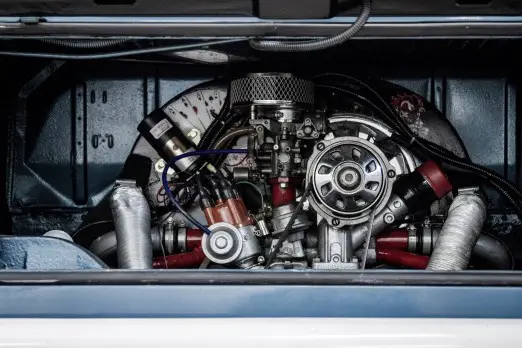Continuously Variable Transmission (CVT) is an invention that has become widely used because of the developments in automobile technology. By constantly shifting the gear ratios, CVTs, as opposed to conventional automatic or manual gearboxes, provide a smooth and effective driving experience. However, the quality and suitability of the gearbox fluid used significantly impacts CVT performance. This is where CVT Fluid NS-3, designed to satisfy the requirements of CVT systems, comes into play as an essential element. The necessity of CVT Fluid NS-3 is examined in this article, along with its features, significance, and essential maintenance procedures to guarantee the durability and effectiveness of cars with CVTs.
Importance of proper fluid for CVT performance:
It is impossible to exaggerate the importance of selecting the right fluid for CVT (Continuously Variable Transmission) performance as it is essential to the transmission system’s effective and seamless functioning. A belt or chain and pulley system is used by CVTs to give a continuous variety of gear ratios, in contrast to standard automatic gearboxes, which have a set number of gears. The significance of choosing the appropriate fluid for CVT performance is examined in more detail below:
- Optimal Friction Control: To give the proper amount of friction between the gearbox components, CVT fluids are carefully designed. Maintaining the proper balance between seamless shifting and effective power transfer requires doing this. When accelerating, problems like juddering, sliding, or jerky motions can be avoided with the right friction qualities.
- Heat Dissipation: The fluid acts as a coolant to disperse the heat produced by CVTs during operation. A suitable fluid is engineered to tolerate elevated temperatures and prevent the gearbox from overheating. Overheating can result in early wear, decreased effectiveness, and even internal component damage.
- Wear and Tear Protection: Additives in the proper CVT fluid guard against the transmission’s component wear and tear. This is especially crucial for CVTs since the belt or chain is always moving and may be under a lot of stress. High-quality fluid contributes to these parts’ longer lifespan.

Characteristics of CVT Fluid NS-3:
A unique transmission fluid called CVT Fluid NS-3 was created especially for use in automobiles with continuously variable transmissions (CVTs). The distinctive working concept of these transmissions is to continually adjust the gear ratios, resulting in a driving experience that is both economical and smooth. The features of CVT Fluid NS-3 are designed to satisfy the unique requirements of these transmissions. The following are salient features:
Friction Modification:
- Additives in CVT Fluid NS-3 give exact frictional qualities, allowing the gearbox components to engage smoothly.
- The fluid’s friction modifiers are precisely calibrated to avoid problems like chain or belt slippage, juddering, or sudden shifts in gear ratios.
High Temperature Stability:
- Because the belt or chain is moving constantly when the CVT is operating, it can produce a lot of heat. The formulation of CVT Fluid NS-3 allows it to endure elevated temperatures and keep its stability in challenging circumstances.
- This feature guarantees steady performance even under extreme operating conditions or with large loads by preventing fluid breakdown.
Viscosity Control:
- For CVT performance, viscosity must be maintained consistently across a wide temperature range. The ideal viscosity of CVT Fluid NS-3 is developed to provide smooth fluid flow and appropriate lubrication under a range of driving circumstances.
- The viscosity properties of the fluid aid in effective power transfer and guard against excessive wear on gearbox parts.
Oxidation Resistance:
- Oxidation inhibitors are included in CVT Fluid NS-3 to prevent varnish and sludge from forming in the gearbox system.
- This feature aids in keeping the gearbox clean by avoiding the accumulation of deposits that can impair the fluid’s functionality.
Importance of Using CVT Fluid NS-3:
Vehicles using Continuously Variable Transmissions (CVTs) must use CVT Fluid NS-3 to preserve their best performance, lifespan, and dependability. This transmission fluid provides several significant advantages and is designed to satisfy the requirements of CVTs. The following summarizes the significance of utilizing CVT Fluid NS-3:
Tailored Formulation for CVTs:
- CVT Fluid NS-3 is specially designed to satisfy the unique needs and features of CVTs. The fluid’s composition is specifically designed to accommodate CVTs, which function on a constantly varying range of gear ratios, in contrast to conventional automatic or manual gearboxes.
Friction Control and Smooth Operation:
- The fluid has additives in it that give exact frictional properties, making gear ratio changes smooth and easy. This is necessary to provide an efficient and enjoyable driving experience without the customary “shift shock” that comes with using a conventional gearbox.
Heat Dissipation and Temperature Stability:
- Because belts or chains are always moving, CVTs may produce a lot of heat while they are operating. Because CVT Fluid NS-3 is built to endure elevated temperatures while remaining stable, it will not overheat and will continue to function reliably even under demanding circumstances.

Seal and Gasket Preservation:
- The gearbox system’s gaskets and seals are kept in good condition with the aid of CVT Fluid NS-3. This is essential to maintain the gearbox operating at the ideal internal pressure and to stop fluid leaks.
Maintaining Viscosity Across Temperatures:
- The fluid’s composition ensures that it will remain viscous throughout a broad temperature range. This feature helps to guarantee that the fluid operates smoothly during startup and normal driving by ensuring that it delivers adequate lubrication in both cold and hot circumstances.
Oxidation Resistance:
- Oxidation inhibitors found in CVT Fluid NS-3 prevent sludge and varnish from forming inside the gearbox. This keeps the gearbox cleaner and keeps deposits from accumulating, which might impair fluid flow and gearbox efficiency.
Signs of CVT Fluid Issues:
Maintaining the health and functionality of the transmission system depends on identifying potential problems with the CVT (Continuously Variable Transmission) fluid. The following are some typical symptoms that might point to CVT fluid issues:
Unusual Noises:
- Any odd sounds, such clunking, buzzing, or whining, particularly when accelerating or decelerating, may be signs of issues with the CVT fluid or other parts of the gearbox.
Overheating:
- Degraded or inadequate CVT fluid might lead to a major problem with the gearbox overheating. Overheating might be indicated by a warning light on the dashboard, a burning smell, or temperatures that are greater than usual.
Fluid Leaks:
- A fluid leak may be indicated by obvious drips under the car or in the gearbox region. To avoid low fluid levels, which might result in gearbox damage, leaks should be fixed right away.
Poor Shifting Performance:
- Problems with CVT fluid might impact how smoothly gear shifts occur. Shifts that are jerky or harsh might be a sign of issues with the gearbox fluid or the actual gearbox.
Delayed Response:
- CVT fluid problems may manifest as a sluggish reaction when changing from park to drive or reverse. This might show up as an unusually long lag in reaction or a delay in engagement.
Foaming or Bubbling Fluid:
- If the CVT fluid is polluted or there is aeration in the gearbox, there may be excessive foaming or bubbling. The fluid’s capacity to adequately cool and lubricate the gearbox may be hampered by foaming.
Warning Lights on the Dashboard:
- Onboard diagnostics in modern cars can identify problems and activate warning lights. It is important to pay attention to warning lights on the dashboard linked to the gearbox or fluid.
CVT Fluid Change and Maintenance:
The lifetime and optimum operation of a car’s transmission system depend heavily on the regular replacement and maintenance of the CVT (Continuously Variable Transmission) fluid. This is a manual for maintaining and changing CVT fluid:
Use Genuine CVT Fluid:
- Use the brand and kind of CVT fluid that the car manufacturer specifies whenever you replace it. To guarantee compatibility and performance, use CVT Fluid NS-3, for instance, if your car needs it.
Fluid Change Intervals:
- Although there are differences in recommended CVT fluid replacement intervals, changing the fluid every 30,000 to 60,000 miles (about 96560.64 km) is advised. Longer intervals, however, could be advised by some manufacturers. Variations in driving conditions, load, and towing can all affect how often fluid changes happen.
Check for Fluid Leaks:
- Check for leaks in the gearbox and its parts before replacing the CVT fluid. Preventing leaks before changing the fluid guarantees that the fresh fluid is not wasted because of persistent leaks.
Use the Correct Fluid Capacity:
- Make sure you follow the owner’s manual’s instructions and add the appropriate amount of CVT fluid. The performance of a gearbox can be impacted by adding too much or too little fluid.
Tips for Optimal CVT Performance:
To guarantee the best possible performance and durability of a car with a continuously variable gearbox (CVT), certain driving behaviors and maintenance procedures must be followed. The following advice will help you reach and keep the best possible CVT performance:
Use Genuine CVT Fluid:
- Use the precise kind that the car manufacturer recommends when adding more or replacing CVT fluid. The gearbox will operate properly and be compatible if the right fluid is used.
Avoid Sudden Acceleration and Heavy Loads:
- Reduce large loads and abrupt, violent acceleration. Because CVTs are made for smooth, steady acceleration, overstressing the gearbox might cause it to wear out sooner than necessary.
Gradual Braking:
- When reducing speed or stopping, use the brakes gradually. This promotes smoother running and lessens the strain on the CVT.
Regular Fluid Checks:
- Regularly check the CVT fluid level and take quick action to stop any leaks. The general health of the gearbox depends on maintaining the appropriate fluid level.
Cooling System Maintenance:
- Verify that the cooling system of the car is operating properly. Keep the engine and gearbox running at the right temperature to avoid damaging the CVT due to overheating.
Avoid Engine Modifications that Affect Transmission:
- A change to the engine or other powertrain parts may affect how well the CVT performs. When making changes, use caution and seek advice from experts to make sure they are compatible.
Frequently asked questions:
What is the purpose of CVT fluid ns 3?
To maintain smooth operation and minimize wear, CVT Fluid NS-3 is made to cool, lubricate, and safeguard Continuously Variable Transmissions.
Which fluid works best in a CVT gearbox?
The fluid that works best in a CVT gearbox is the manufacturer-recommended CVT fluid, such as CVT Fluid NS-3, to ensure optimal performance and longevity.
Which kind of CVT fluid is used by Nissan?
When it comes to Nissan cars with continuously variable transmissions (CVTs), CVT Fluid NS-3 is usually used.
Is excessive CVT fluid harmful?
Indeed, using too much CVT fluid may be dangerous as it can cause overfilling, which can raise pressure and damage the transmission’s internal parts.
Conclusion:
In conclusion, to guarantee the best possible CVT performance, continuous monitoring of CVT Fluid NS-3 and adherence to manufacturer specifications are required. The flawless functioning of continuously variable gearboxes depends on this specialist fluid’s high-temperature stability and precise friction management. The overall health and longevity of the transmission system are dependent on performing routine fluid changes, taking care of any issues, and adopting driving habits that minimize the strain on the CVT. Car owners who are attentive and aware about maintenance methods may ensure that their vehicles, which have CVTs installed, offer a smooth and dependable driving experience.

